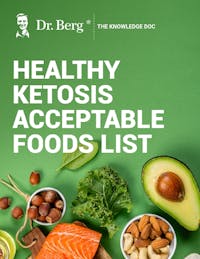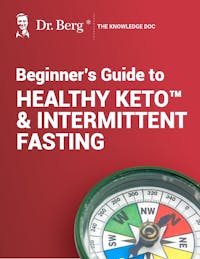How Much Salad Do I Eat

Healthy Keto Acceptable Foods List
Explore a comprehensive list of foods and beverages that align with Healthy Keto®
Identify which foods support fat-burning and metabolic health
Discover nutritious options for fats, proteins, and vegetables to support your health goals
Learn about common foods that aren’t Healthy Keto-approved

Healthy Keto Acceptable Foods List
Explore a comprehensive list of foods and beverages that align with Healthy Keto®
Identify which foods support fat-burning and metabolic health
Discover nutritious options for fats, proteins, and vegetables to support your health goals
Learn about common foods that aren’t Healthy Keto-approved

Healthy Keto Acceptable Foods List
Explore a comprehensive list of foods and beverages that align with Healthy Keto®
Identify which foods support fat-burning and metabolic health
Discover nutritious options for fats, proteins, and vegetables to support your health goals
Learn about common foods that aren’t Healthy Keto-approved

Healthy Keto Acceptable Foods List
Explore a comprehensive list of foods and beverages that align with Healthy Keto®
Identify which foods support fat-burning and metabolic health
Discover nutritious options for fats, proteins, and vegetables to support your health goals
Learn about common foods that aren’t Healthy Keto-approved

Healthy Keto Acceptable Foods List
Explore a comprehensive list of foods and beverages that align with Healthy Keto®
Identify which foods support fat-burning and metabolic health
Discover nutritious options for fats, proteins, and vegetables to support your health goals
Learn about common foods that aren’t Healthy Keto-approved

Healthy Keto Acceptable Foods List
Explore a comprehensive list of foods and beverages that align with Healthy Keto®
Identify which foods support fat-burning and metabolic health
Discover nutritious options for fats, proteins, and vegetables to support your health goals
Learn about common foods that aren’t Healthy Keto-approved

Healthy Keto Acceptable Foods List
Explore a comprehensive list of foods and beverages that align with Healthy Keto®
Identify which foods support fat-burning and metabolic health
Discover nutritious options for fats, proteins, and vegetables to support your health goals
Learn about common foods that aren’t Healthy Keto-approved

Healthy Keto Acceptable Foods List
Explore a comprehensive list of foods and beverages that align with Healthy Keto®
Identify which foods support fat-burning and metabolic health
Discover nutritious options for fats, proteins, and vegetables to support your health goals
Learn about common foods that aren’t Healthy Keto-approved

Healthy Keto Acceptable Foods List
Explore a comprehensive list of foods and beverages that align with Healthy Keto®
Identify which foods support fat-burning and metabolic health
Discover nutritious options for fats, proteins, and vegetables to support your health goals
Learn about common foods that aren’t Healthy Keto-approved

Beginner’s Guide to Healthy Keto & Intermittent Fasting
Receive a step-by-step guide to starting Healthy Keto® and intermittent fasting
Learn about foundational principles and best practices for beginners
Get detailed visual guidance on portion sizes and meal composition
Discover how to set achievable goals and monitor your progress
Find practical tips for overcoming common challenges and staying motivated

Beginner’s Guide to Healthy Keto & Intermittent Fasting
Receive a step-by-step guide to starting Healthy Keto® and intermittent fasting
Learn about foundational principles and best practices for beginners
Get detailed visual guidance on portion sizes and meal composition
Discover how to set achievable goals and monitor your progress
Find practical tips for overcoming common challenges and staying motivated

Beginner’s Guide to Healthy Keto & Intermittent Fasting
Receive a step-by-step guide to starting Healthy Keto® and intermittent fasting
Learn about foundational principles and best practices for beginners
Get detailed visual guidance on portion sizes and meal composition
Discover how to set achievable goals and monitor your progress
Find practical tips for overcoming common challenges and staying motivated

Beginner’s Guide to Healthy Keto & Intermittent Fasting
Receive a step-by-step guide to starting Healthy Keto® and intermittent fasting
Learn about foundational principles and best practices for beginners
Get detailed visual guidance on portion sizes and meal composition
Discover how to set achievable goals and monitor your progress
Find practical tips for overcoming common challenges and staying motivated

Beginner’s Guide to Healthy Keto & Intermittent Fasting
Receive a step-by-step guide to starting Healthy Keto® and intermittent fasting
Learn about foundational principles and best practices for beginners
Get detailed visual guidance on portion sizes and meal composition
Discover how to set achievable goals and monitor your progress
Find practical tips for overcoming common challenges and staying motivated

Beginner’s Guide to Healthy Keto & Intermittent Fasting
Receive a step-by-step guide to starting Healthy Keto® and intermittent fasting
Learn about foundational principles and best practices for beginners
Get detailed visual guidance on portion sizes and meal composition
Discover how to set achievable goals and monitor your progress
Find practical tips for overcoming common challenges and staying motivated

Beginner’s Guide to Healthy Keto & Intermittent Fasting
Receive a step-by-step guide to starting Healthy Keto® and intermittent fasting
Learn about foundational principles and best practices for beginners
Get detailed visual guidance on portion sizes and meal composition
Discover how to set achievable goals and monitor your progress
Find practical tips for overcoming common challenges and staying motivated

Beginner’s Guide to Healthy Keto & Intermittent Fasting
Receive a step-by-step guide to starting Healthy Keto® and intermittent fasting
Learn about foundational principles and best practices for beginners
Get detailed visual guidance on portion sizes and meal composition
Discover how to set achievable goals and monitor your progress
Find practical tips for overcoming common challenges and staying motivated
Veggies are non-negotiable whether you're on a health kick, aiming for weight loss, or just trying to eat better. But how much salad or vegetable do you need per day? The answer might surprise you.
The recommended amount is 7 to 10 cups of raw vegetables each day. Sounds like a lot, right? It is! Leafy greens and other veggies pack vital nutrients that help keep diseases at bay and improve overall wellness.
Understanding Your Daily Vegetable Needs
Eating enough vegetables and salads daily is crucial for meeting your nutritional needs and maintaining optimal health. But how much is enough? And what role do veggies play in nourishing our bodies?
As a nutrition expert, I've seen firsthand the incredible benefits of incorporating various vegetables into your daily diet. These nutrient-dense foods, from leafy greens to colorful bell peppers, are the unsung heroes of a healthy lifestyle.
The Role of Vegetables in Nourishment
Vegetables are nature's multivitamins, packed with essential vitamins, minerals, and other nutrients that keep our bodies functioning at their best. They're rich in fiber, which aids in digestion and helps maintain a healthy gut microbiome.
Eating various vegetables ensures you get a broad spectrum of nutrients, each vital in maintaining overall health. For example, leafy greens like spinach and kale are excellent sources of vitamin K, which supports bone health and proper blood clotting.
How Much Is Enough?
The recommended daily amount of salad or vegetables is about 7 to 10 cups, with one cup of salad equivalent to one ounce. This may seem like a lot, but it's achievable when you make veggies the star of your meals and snacks.
Aim to fill half your plate with vegetables at each meal and incorporate them into snacks like carrot sticks with hummus or celery with nut butter. By prioritizing vegetables, you'll quickly reach your daily quota and reap the numerous health benefits they provide.

Maximizing Nutrient Intake from Salads
Salads are a fantastic way to pack various nutrients into one meal. But not all salads are created equal. To maximize your salads' nutritional value, it is essential to choose high-density nutrient ingredients and suitable dressings.
Choosing High-Density Nutrient Ingredients
Choose nutrient-rich greens like spinach and kale instead of iceberg lettuce when building your salad. These leafy vegetables are packed with vitamins A, C, and K and minerals like iron and calcium.
Sprouts are another nutritional powerhouse to include in your salads. In terms of phytonutrients, just one teaspoon of sprouts is equivalent to 50 teaspoons of broccoli. Add a variety of sprouts like alfalfa, broccoli, and radish to supercharge your salad's nutrient density.
The Importance of Salad Dressings
The dressing you choose can make or break the nutritional value of your salad. Many store-bought dressings are loaded with added sugars and unhealthy fats that can negate the health benefits of your veggies.
Opt for dressings with low sugar content or use healthy fats like olive oil and vinegar. By choosing the proper dressing, you can enhance the flavor of your salad without compromising its nutritional integrity.
Incorporating Healthy Fats and Avoiding Sugars in Salads
Adding healthy fats to your salads is crucial for absorbing fat-soluble vitamins like A, D, E, and K. Without adequate fat, your body may not fully utilize these essential nutrients.
The Role of Healthy Fats
Add healthy fat sources like avocado, nuts, seeds, and cheese to your salads. These ingredients add flavor and texture and help your body absorb the nutrients from the vegetables more effectively.
For example, adding a sprinkle of feta cheese or a drizzle of olive oil to your salad can significantly increase the absorption of beta-carotene, a precursor to vitamin A in many vegetables.
Steering Clear of Sugary Toppings
While adding sweet toppings like croutons, cranberries, or raisins to your salad may be tempting, these ingredients can quickly turn a healthy meal into a sugar bomb. Sugary toppings can spike your blood sugar levels and contribute to inflammation in the body.
Instead, choose savory toppings like roasted chickpeas, grilled chicken, or hard-boiled eggs. These protein-rich additions will help keep you feeling full and satisfied without the added sugar.
Enhancing Salads with Additional Nutritious Ingredients
To take your salads to the next level, consider adding various nutritious ingredients beyond vegetables. Nuts, seeds, and cheese can provide additional nutrients and satisfy your salads.
Diversifying Your Salad Bowl
Experiment with different vegetables to keep your salads exciting and flavorful. For added color and texture, mix in shredded carrots, sliced bell peppers, diced cucumbers, or roasted beets.
Don't be afraid to think outside the box and try new vegetable combinations. Jicama, radishes, and fennel can add a refreshing crunch to your salads. At the same time, roasted bell pepper or butternut squash can provide a touch of sweetness without the need for sugary toppings.
Nuts, Seeds, and Cheese for Extra Nutrition
Nuts and seeds are excellent healthy fats, protein, and fiber sources. Sprinkle a handful of almonds, walnuts, or pumpkin seeds onto your salad for added crunch and nutrition.
Add a touch of cheesy bliss to your salads.
Whether you mix in creamy goat cheese, bold blue cheese, or tangy Parmesan, you're enriching flavor and imparting satisfying textures.
The Significance of Potassium Intake Through Vegetables
Potassium is an essential mineral that plays a crucial role in maintaining heart health. It helps regulate blood pressure, supports proper muscle and nerve function, and balances bodily fluids.
Meeting Your Potassium Needs with Vegetables
Vegetables are excellent sources of potassium, and consuming a variety of them can help you meet your daily requirements without relying on sugary fruits or processed foods. Some of the best vegetable sources of potassium include:
Spinach
Swiss chard
Beet greens
Brussels sprouts
Broccoli
The recommended daily amount of potassium for someone weighing 200 pounds is 4,700 milligrams.
By incorporating a variety of vegetables into your diet, you can quickly meet your potassium needs and support optimal heart health without relying on sugary or processed foods.

Eating Vegetable Salad For Weight Management
Eating vegetable salad for weight management is effective due to its low-calorie and high-nutrient content. Packed with fiber, vitamins, and minerals, vegetable salads help keep you full and satisfied, making it easier to control your overall calorie intake.
This can be particularly beneficial for those concerned with portion control and healthy eating habits. However, the question "Does salad make you gain weight?" can arise if the salad is laden with high-calorie toppings and dressings.
To maintain the weight management benefits, opt for various fresh vegetables, lean proteins, and light dressings to keep your salads nutritious and low in calories.
Conclusion
Forget what Hollywood tells us about eating green - it’s not boring; it's essential! Whether adding more salads into your meals or sneaking extra veggies into soups and stews, there's no one-size-fits-all approach here.
Your body craves variety. Keep things exciting by mixing different types of vegetables every week, so hitting those 7-10 cups doesn't feel daunting but deliciously doable!
So next time someone asks, "How much salad or vegetable do you need per day?" you'll know exactly why this habit is worth its weight in gold...or kale!
Previous blog
Evaluation Basics Part 3Next blog
Hypoglycemia BasicsTags

Popular
08/21/2024
41K views
05/22/2024
37.3K views
11/18/2024
217.5K views
03/18/2024
11/21/2022




